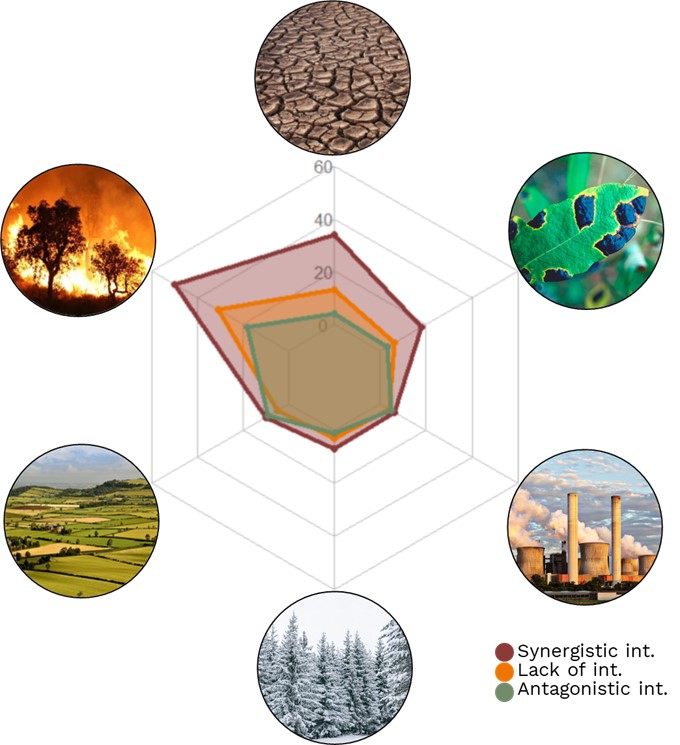Global review on interactions between insect pests and other forest disturbances

Is the whole greater than the sum of his parts? In this new publication in Landscape Ecology, we performed a literature review to describe how insect pests interact with fire, drought, pollution and other disturbances and we discuss their role on forest landscape dynamics.
Forest landscapes worldwide are shaped by abiotic drivers such as fire, windstorms, and drought, but also by biotic drivers like insect pests and pathogens. Although the effects of such drivers on forest dynamics have been studied extensively, knowledge of the interactions between insect pests and other drivers of change is still coarse and fragmented. Indeed, new invasive insect species and global change may lead to novel interactions and produce impacts on forest ecosystems never before experienced. In this context, we present a revision of the mechanisms underlying the main interactions between insect pest outbreaks and other forest disturbances, identifying interactions emerging from current disturbance dynamics, and highlighting the role of simulation models in exploring these interactions in a dynamic, mechanistic, and spatially explicit manner. Most studies focused on the interaction between insect outbreaks and fire, whereas interactions between insect pests and drought, forest management or forest diseases received much less attention. Although we identified some trends in how interactions were manifested, interactions were not more commonly found at particular spatial or temporal scales. Relatively few studies used simulation models to explore interactions between disturbances and very few studies explored multiple interactions. Interactions between pests and other forest disturbances play critical roles in driving forest dynamics. The effects of these interactions are likely to increase in the face of continuing global change.
https://link.springer.com/article/10.1007/s10980-021-01209-7




